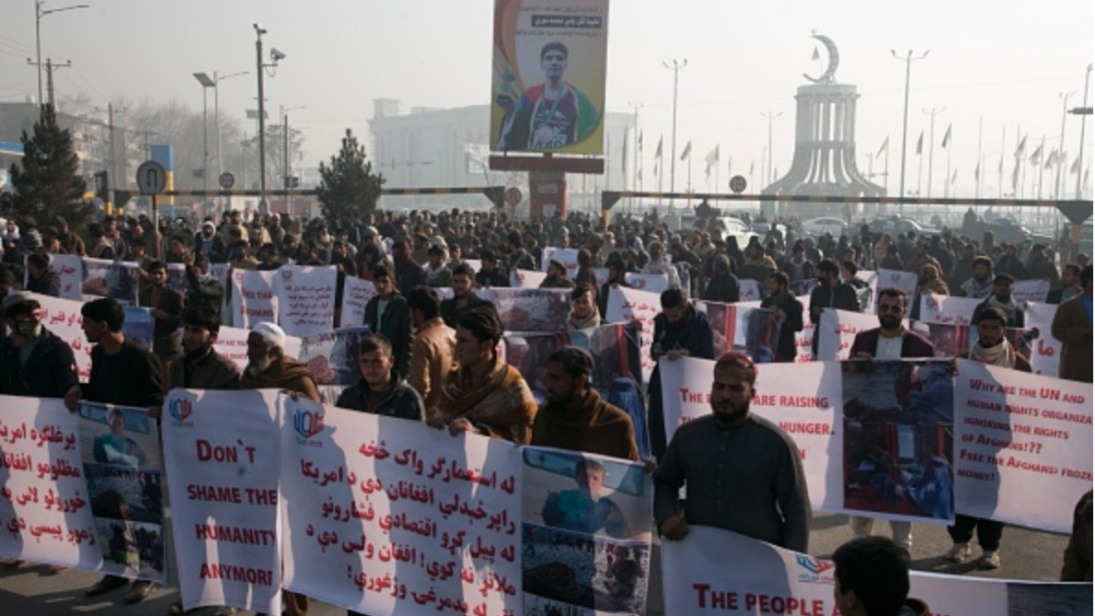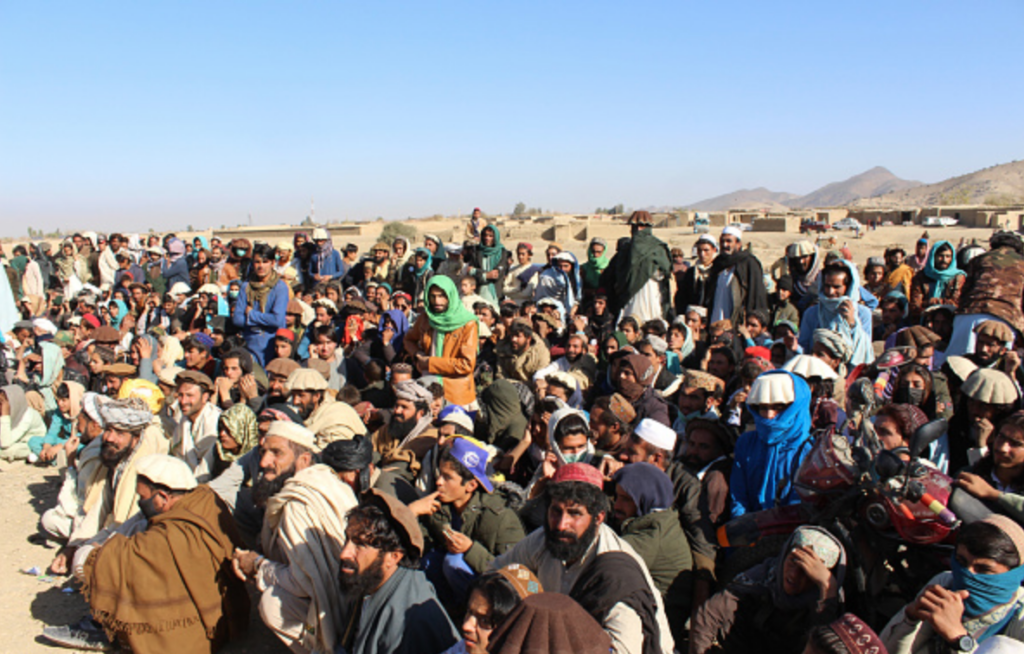
At the beginning of 2021, Afghans faced another year of conflict and economic challenge, retaining some semblance of hope that their leadership and the Taliban would be able to reach a political resettlement through the intra-Afghan Peace Talks. In August, that dream vanished with the unexpected decampment of former President Ashraf Ghani during the early afternoon of August 15. His escape to the United Arab Emirates created a power vacuum that led to chaos and the collapse of the Kabul government, a ceding of all gains and democratic political legitimacy built over the past two decades. The events that followed August 15 have been the most devastating in modern Afghan history. The economy collapsed, Afghan funds frozen, hundreds of thousands of Afghans became refugees, women lost their basic freedoms, the Afghan state lost its international recognition, and millions of ordinary civilians, including children, are on the brink of famine and human catastrophe. 2022 has begun with Afghanistan facing a collapsed economy, ballooning humanitarian crisis, and the absence of a legitimate government. The international community must decide whether to recognize the Taliban de facto government as new rulers or let Afghanistan revert to the dark ages of the 1990s and civil war.
The Path to August 15 and Washington’s Miscalculations
The months leading up to the fall of Kabul presaged the collapse of negotiations: the intra-Afghan Talks became little more than a showcase for regional summitries, and neither President Ghani nor the Taliban had the desire to share or transfer political power. Yet the international community still hoped that direct talks between conflicting parties in Doha would end the half-century Afghan conflict. U.S. President Joe Biden’s decision to withdraw all troops before the twentieth anniversary of 9/11 catalyzed the collapse of the Republic. The Biden administration believed President Ghani and 350,000 Afghan National Defense and Security Force (ANDSF)—trained by the U.S. and coalition forces—might keep the Republic secure, which proved a significant political, diplomatic, intelligence, and military miscalculation.
The international community must decide whether to recognize the Taliban de facto government as new rulers or let Afghanistan revert to the dark ages of the 1990s and civil war.
The ANDSF, projected as being military superior to the Taliban both in numbers and equipment, lost its morale for two principal reasons: first, due to the Doha U.S.-Taliban agreement, which sidelined the government, and second, because of lost motivation stemming from corruption in higher ranks and Ghani’s Commander of Chief micromanagement leadership. The Taliban successfully negotiated with many district elders, eventually leaving the ANDSF no option than to surrender. While U.S. troops prepared for the withdrawal, the Taliban began taking provincial capitals one-by-one until they reached the gates of Kabul in mid-August.
The Fall of Kabul and the Unforgettable Images of Kabul Airport
The political vacuum left by Ghani led the cobbled-together Republic to unfold rapidly as the Taliban entered the Afghan capital and took the presidential palace at without firing a single shot. A few hours later, the Islamic Emirate flag, waving from the roof of the Presidential palace, officially signaled the revival of the Islamic Emirate of Afghanistan, in a dramatic end to the two-decade long war that began with the U.S. invasion. The Taliban flag printed on the wall of the U.S. Embassy in Kabul—shortly after the takeover—inspired Jihadi networks around the globe and projected a new reality that Washington’s War on Terror had failed.
The Afghan state has a long, storied record of regime change, coups, revolutions, civil war—it is marked by systemic discontinuity. This time, the collapse of the Republic was broadcasted to Afghan families and millions around the globe, who watched heartbreaking live images of Afghan men, women and children running at the Kabul airport behind the U.S. military evacuation planes. The horrific images of desperate Afghans falling from these planes went viral, internationally broadcasting the U.S. failure embedded in backing the Afghan government while signing a peace deal with the Taliban that enabled their return to power.
The First 100 Days of the Emirate and the Undoing of 20 Years of Afghan Women Gains Overnight
For the women of Afghanistan, the post-August development marked the end of twenty years of progress made towards equality and personal freedom. The Republic’s leadership—including some female elites or those who benefited financially from Afghan women’s voices—have failed to dismantle the patriarchal, discriminatory views that pervade Afghan society. Despite this, under the umbrella of the Republic and with the support of the international community, millions of ordinary Afghan girls had been able to attend school and thousands of women participated in the Republic’s politics and economics. Thousands of young Afghan females received access to higher education, and women in general, were able to enjoy freedom of expression or travel without restrictions.
The return of the Taliban immediately led to the shuttering of women’s universities and schools as the new regime prohibited women’s education. In September, schools opened for boys of all ages while girls were only allowed to pursue primary education. After many demonstrations, the Taliban promised to reopen some schools for girls above the age of 12, but in practice, the majority of girls were barred from attaining secondary education. As a clear sign of policy change, the Taliban replaced the Ministry of Women’s Affairs with the Ministry for the Propagation of Virtue and the Prevention of Vice, which is reinforcing the militants’ interpretation of Shariah law from two decades ago. While women have continued protesting the Taliban’s discriminatory and backwards policies, the gains they celebrated over the course of two decades were taken away overnight.
Taliban’s Internal and External Battles
While Taliban leadership was once united under one white flag, the decentralization of the movement today means various factions are in dissension. While the Haqqani Network prefers close ties to Pakistan, Mullah Baradar and his Doha team seeks to diversify the Taliban’s dependence on Islamabad and a new-generation faction seeks a less isolated Afghanistan.
Aside from the leadership competition, the Taliban are also confronting challenges in the lower rank. Despite creating a commission to verify their fighters, the Taliban has no control over them. Reports that the Taliban lower rank might have close ties with international terrorist groups threaten potential future Taliban-U.S. engagement.
The Taliban replaced the Ministry of Women’s Affairs with the Ministry for the Propagation of Virtue and the Prevention of Vice, which is reinforcing the militants’ interpretation of Shariah law from two decades ago.
The Taliban are also attempting to manage external challenges, most prominently their international recognition. Regional lobbying efforts have largely failed, including the latest gathering of the Organization for Islamic Countries (OIC) in Pakistan. Frozen assets represent a significant financial toll for the Taliban as they cannot pay government workers or any services for the nation, including power exported from neighboring countries.
Another challenge is the National Resistance Front of Afghanistan (NRF), also known as the Second Resistance. Although the current resistant group has no international funding or political support and controls no significant territory in Afghanistan as their predecessors did in the 1990s, the group still threatens the Taliban’s legitimacy. With alarming reports that the Taliban is killing and torturing the former Afghan security forces, the NRF can become a dragnet, where the former ANDSF can join the NRF and mount a real resistance against the Taliban.
The so-called Islamic State-Khorasan (ISKP) is yet another threat. ISKP’s attack on Kabul airport during the evacuation days—as part of which 13 U.S. Marines and more than 170 allied Afghans lost their lives—indicates that the War on Terror has far from ended, despite the U.S. withdrawal.

The Future of Counterterrorism in Afghanistan
For Washington, the unprecedented fall of Kabul brought parallels to the fall of Saigon: the Taliban takeover represented a loss of two decades of investment in Afghan democracy and damaged its counterterrorism leverage. Short after Taliban’s take-over, U.S. intelligence warned that the Islamic State might attack the West within six months, and Al-Qaeda could do so within 24 months.
While the U.S. diplomatic backchannel efforts in Doha are seeking some counterterrorism agreement with the Taliban, cooperating with the Taliban remains a political risk for the Biden administration, which inherited blame for the Trump-era Doha U.S.-Taliban deal. In addition, the Taliban’s so-called commitment to fighting terrorism has been a subject on which experts are conflicted. Last year, a UN report indicated that the Taliban never severed their relationship with the international terrorist groups, and remain in close contact with Al-Qaeda.
The Taliban is also divided about cooperating with U.S. officials, though they are aware that they require U.S. funding and neighboring countries’ intelligence to fight extremism. Even if the Taliban leadership decide to distance themselves completely from terrorist groups, they have neither the capacity, intelligence nor, most importantly, the resources to fight internal and external extremism.
Afghanistan in 2022: Economic Collapse, Humanitarian Crisis, and Mass Migration
Post-August 2021, no sovereign state has recognized the Taliban’s interim government; the abrupt cut-off of aid and frozen funds has prompted international humanitarian organizations to rally humanitarian response in the face of human catastrophe. According to the UN World Food Program and Food and Agriculture Organization analysis, about 23 million Afghans, including one million children, will face mass starvation and life-threatening food insecurity this upcoming winter.
So far, hundred thousand Afghan educators, journalists, activists, politicians, and former security forces have fled the country via US-led evacuation operation. The UN is expecting an additional half million refugees—currently in hiding—to leave the country as a result of its economic collapse. While the UN has requested the region to allow refugees, most Afghans are stuck behind closed borders or lack adequate travel documents to leave the country.
If the international community keeps de-prioritizing the Afghanistan crisis and fails to draw up an economic and political resolution, Afghanistan is likely to fall back into a 1990s pattern of civil war. This time, deepened ethnic divisions and the presence of international terrorist groups might lead Afghanistan down Syria’s path or end in wide-scale human tragedy as in the Balkans and Rwanda. In the event of a civil war, millions of new refugees would generate a massive international refugee crisis beyond the realm of the region. In order to prevent humanitarian catastrophe, the international community must mobilize aid and resettlement efforts. In the long run, state recognition condition and economic support should be used as leverage to protect women’s fundamental rights and keep the Taliban to their Doha commitment to fight internal and external extremism.
***
Click here to read this article in Urdu.
Image 1: Anadolu Agency via Getty Images
Image 2: Anadolu Agency via Getty Images


